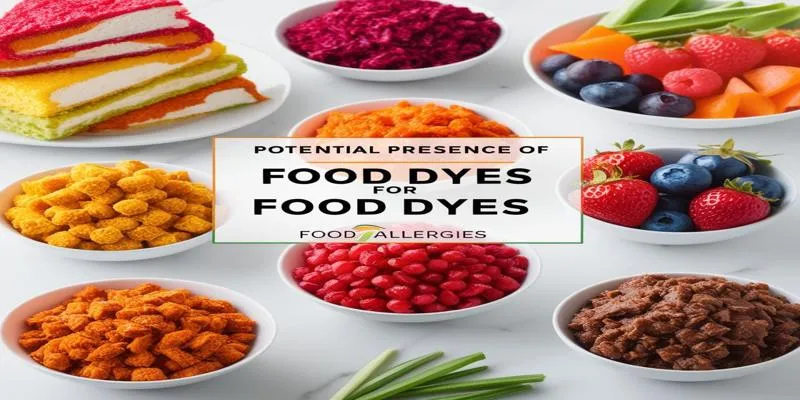Salmonella: Symptoms, Prevention, and Safety Tips
Salmonella, a common yet sneaky foodborne pathogen, can seriously compromise health. This bacterium is often found in raw meat, eggs, and various fruits and vegetables. Though prevalent, many are unaware of how Salmonella spreads or how to prevent it. Recognizing the symptoms—ranging from minor stomach discomfort to severe illness—is crucial.
Understanding where Salmonella thrives and how to prevent contamination can significantly reduce your risk. This article covers the causes, symptoms, and preventative measures to keep you safe. The key to avoiding this cunning bacterium is practicing salmonella food safety and preventing Salmonella infection.

What is Salmonella and Why is it Dangerous?
Salmonella is a type of bacterium often found in raw or undercooked food. It primarily inhabits meat, poultry, eggs, and dairy products. When ingested, it can cause food poisoning, manifesting as stomach cramps, nausea, vomiting, and diarrhea. Severe cases can lead to renal failure, dehydration, and even death. The risk lies in its rapid multiplication under improper food storage or preparation.
Though commonly associated with chicken, Salmonella can be found in various foods, including raw fruits, vegetables, and contaminated water. Its adaptability to different environments makes it challenging to eradicate, especially when food is mishandled. Poor sanitation, improper cooking, or kitchen cross-contamination can contribute to Salmonella outbreaks.
How Does Salmonella Spread?
Salmonella primarily spreads through the consumption of contaminated food or water. Undercooked meat, especially chicken and eggs, is a common entry point. It can also spread through fruits or raw vegetables contaminated with animal feces. Cross-contamination occurs when germs from raw foods transfer to prepared meals via dirty surfaces or hands.
Those who handle infected food without washing their hands risk spreading the germs to other foods, utensils, and kitchen surfaces. Eating food contaminated by germs from sick animals or tainted water also poses a risk. Being aware of these common sources of contamination can help you take necessary precautions to avoid infection.
Common Symptoms of a Salmonella Infection
Symptoms of a Salmonella infection typically appear six hours to six days after exposure. Common symptoms include nausea, vomiting, diarrhea, stomach cramps, and fever. While symptoms are often mild and resolve without medical intervention, some individuals—particularly those with weakened immune systems—may experience more severe symptoms.
Severe symptoms include dehydration, high fever, bloody stools, and persistent vomiting. If you experience these symptoms, stay hydrated and consult a doctor if necessary. Young children, older adults, and pregnant women are more susceptible to severe illness from Salmonella. Early detection and treatment are vital, as the duration of infection impacts the risk of complications.
How to Prevent Salmonella Infection?
Proper food hygiene is crucial in preventing Salmonella infection, especially when handling raw meat, eggs, and vegetables. Always wash your hands thoroughly before and after handling food. Cooking food properly is another essential preventive measure. Eggs should be cooked until both the whites and yolks are firm, and poultry should reach an internal temperature of at least 165°F. Avoid consuming undercooked or raw meat and eggs to minimize your risk.
Cross-contamination is another significant concern. Use separate cutting boards and utensils for raw meats and vegetables, and clean surfaces thoroughly after food preparation. Proper storage is also essential; refrigerate leftovers promptly and maintain a clean kitchen. Following these food safety guidelines can greatly reduce the risk of Salmonella infection.
Risk Factors and Vulnerable Populations
Certain populations are more susceptible to severe Salmonella infections. Children under five, older adults, and individuals with weakened immune systems are particularly vulnerable. These groups may experience more severe symptoms, such as bloodstream infections or dehydration, requiring immediate medical attention.
If you belong to one of these high-risk groups, exercise extra caution when handling or consuming food. Consult a doctor if you suspect a Salmonella infection, especially if you’re in a vulnerable group. Individuals with impaired immune systems, such as cancer patients, may be more vulnerable even to mild infections, necessitating extra care.
How to Handle Raw Meat Safely to Avoid Contamination?
There are several essential steps to reduce the risk of Salmonella when handling raw meat. First, wash your hands thoroughly before and after handling raw meat. Spend at least 20 seconds washing your hands under warm water with soap. To prevent cross-contamination, use separate cutting boards for raw meat and other foods, especially fresh produce.
Clean all surfaces and utensils used in meat preparation with hot, soapy water. Cook meat to the appropriate temperature to kill harmful bacteria, including Salmonella. Refrigerate leftovers immediately, as bacteria can multiply rapidly at room temperature. These simple steps can help keep dangerous bacteria out of your kitchen.
Foods Most Likely to Contain Salmonella
Certain foods are more likely to contain Salmonella. Common culprits include raw or undercooked eggs, especially those used in homemade mayonnaise, hollandaise sauce, and certain ice creams. Meat and poultry, particularly when undercooked, may also harbor the bacteria. Fruits and vegetables can be contaminated if mishandled or washed with contaminated water.
Unpasteurized dairy products, such as cheese and milk, are also at risk. Consume foods more prone to contamination with caution, even if they appear fresh or clean. Always check expiration dates and avoid items that seem improperly stored or left at room temperature for extended periods.

What to Do If You Suspect a Salmonella Infection?
If you suspect a Salmonella infection, seek medical advice, especially if you belong to a vulnerable group. In mild cases, rest and hydration can aid recovery. However, if you experience severe symptoms like high fever, bloody stools, or frequent vomiting, consult a doctor immediately.
A healthcare professional can confirm the diagnosis through lab tests and may prescribe antibiotics if necessary. Severe cases may require hospitalization to address complications like dehydration. Follow your doctor’s advice and avoid preparing food for others to prevent spreading the infection.
Conclusion
Salmonella is a sneaky bacterium that can cause significant illness if precautions are not taken. Understanding how it spreads, the foods it affects, and how to prevent infection can help protect yourself and others. Always prioritize good hygiene, cook food thoroughly, and be vigilant about cross- contamination. We should all be mindful of Salmonella food safety. By following safety guidelines and staying vigilant, you can enjoy meals without worry and protect your health.











